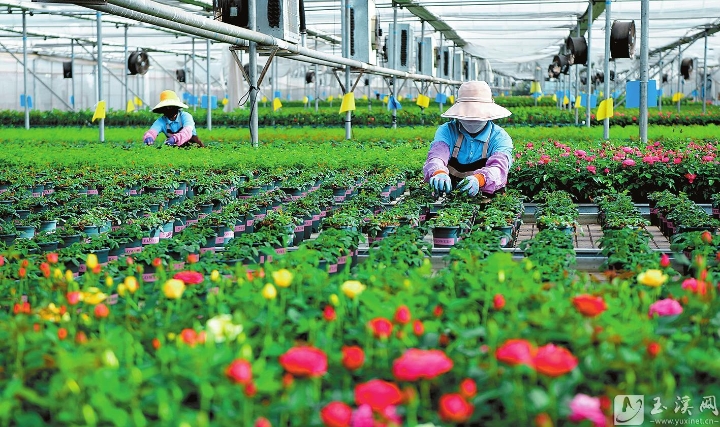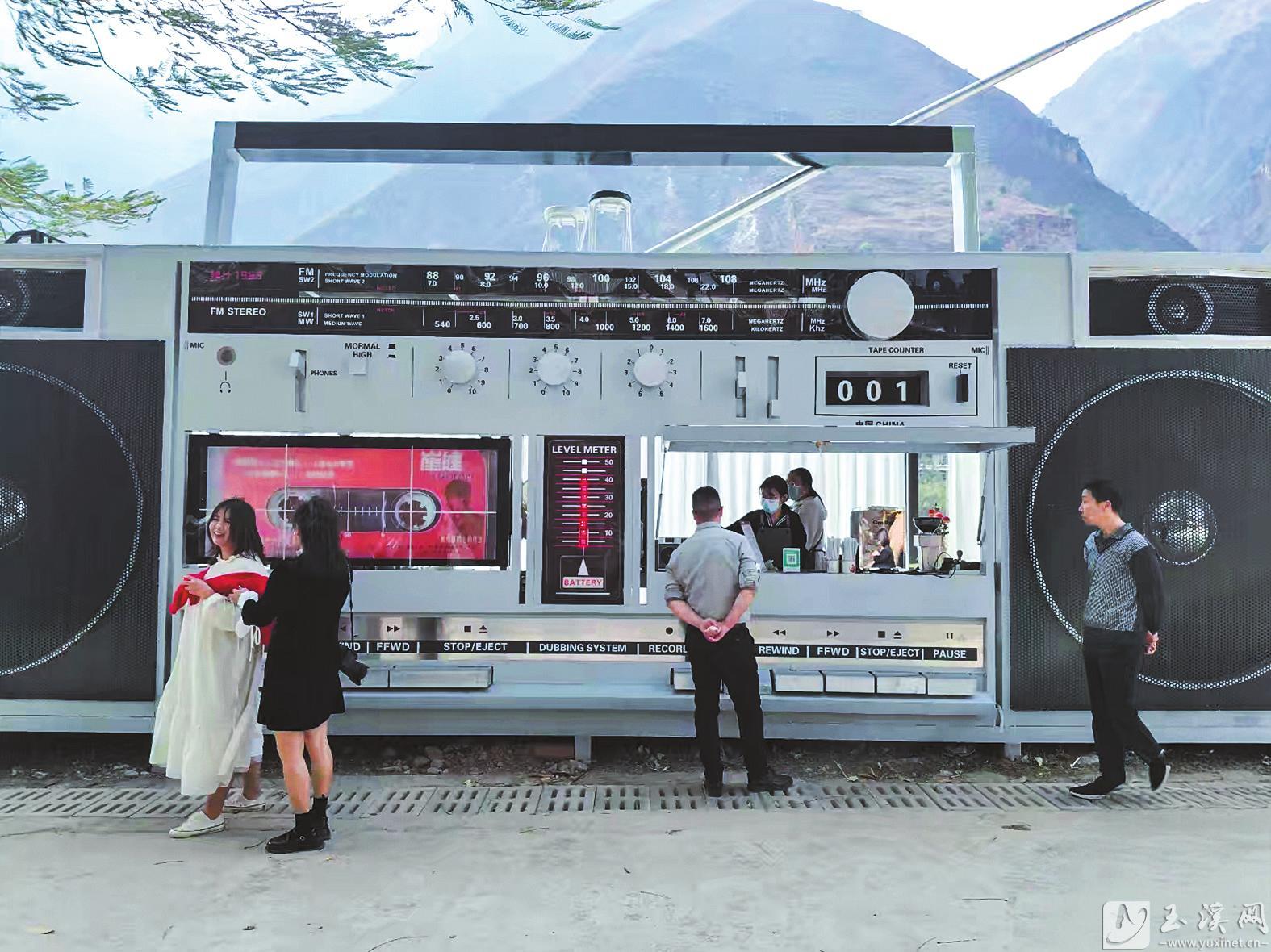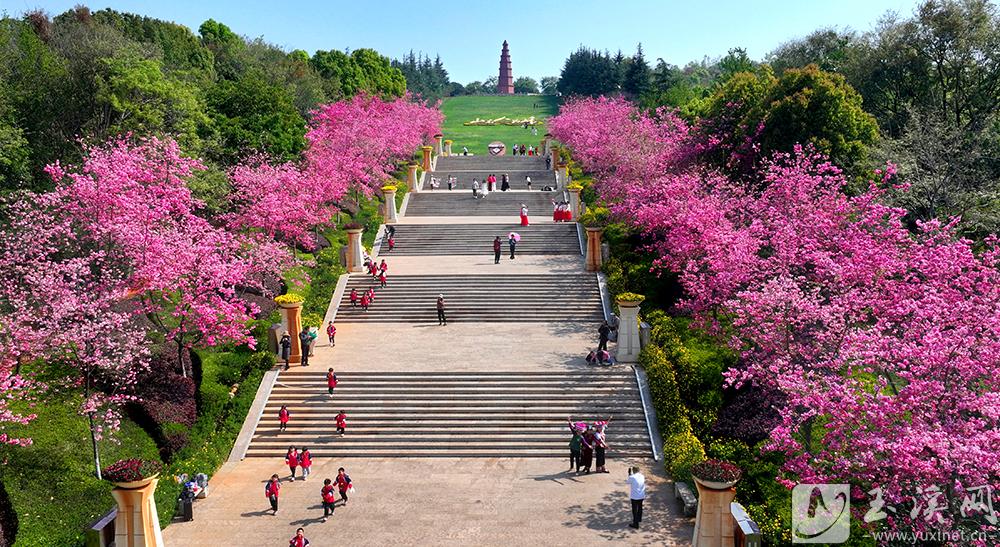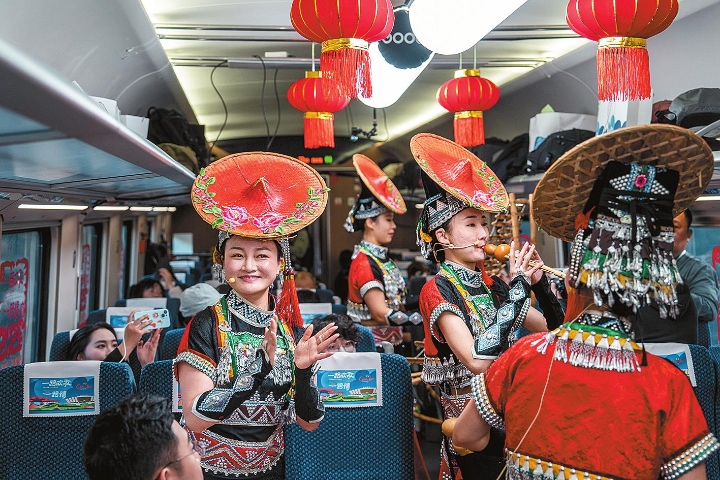 Yuxi Municipal People's Government
Yuxi Municipal People's Government
Ancient Grave Site in the Lijiashan Mountains
Lijiashan grave site lies behind Zaojie Village in Jiangcheng Township, right beside Chengjiang-Jiangchuan Road, 86 kilometers from Kunming and 44 kilometers from Yuxi. It is one of the major aristocratic grave sites of ancient Dian Kingdom. The excavation at the site in 1992 was listed as one of the Ten Most Important Archaeological Discoveries of the Year. The Dian Kingdom existed from the Warring States Period to early Han Dynasty. According to Historical Records, Emperor Wu of the Han Dynasty conquered the Dian Kingdom in the second year of Yuanfeng Period and Dian became a subordinate kingdom of the Han Empire. In 1966, some villagers started to cultivate land in the mountains, which destroyed some graves at surface that had lain there for over two thousand years. In 1972, the cultural relics team of Yunnan Province conducted the first excavation. In 1989, the grave site was listed on the first cultural relics preservation units of the county. From 1991 to 1992, the second excavation was carried out. In 1993, the site was approved to be one of the fourth cultural relics units of the province. In 2001, it was on the list of the fifth national key cultural relics preservation units announced by the State Council.
The relics unearthed from the second excavation were articles made after the empire of the Western Han set up counties in Yunnan, but the excavation scale and the richness of relics all exceeded graves of early the Western Han Dynasty, which shows that the aristocratic class of the Dian Kingdom in middle and late Western Han still occupied high social and economic status. Together with Shizhaishan Grave Site and Yangputou Grave Site, it is considered the major discovery of aristocratic graves of ancient Dian Kingdom and the scale, the amount, and the quality of discovered relics make it well known at home and abroad. The rich varieties of relics present concrete materials of the splendid cultures of ancient Dian people from two thousand years ago, bearing much value for scientific research.
The Lijiashan Ancient Grave Site takes up 2.5 square kilometers with a key protection area of 40,663 square meters. Graves mainly scatter on the top and southwest side and all of them are in the style of vertical inhumation. The site faces the Xingyun Lake with the Duoyi Mountains at its back. There is hot spring under the foot of the mountain. It is surrounded with beautiful sceneries. In the two excavations, about 85 graves were cleared and 3,400 pieces or sets of relics of bronze, silver, gold, jade, agate, and other materials were unearthed. The Crummie-and-Tiger Bronze Table unearthed from tomb 24 is 76 cm long and 43 cm high of a crummie with a calf and one tiger carvings, demonstrating the aesthetic appreciation of ancient Dian people. Other unique relics include waving-scene shell container, three-knight copper drum, and mating-cattle shell container. These relics are in unique styles with vivid figures and delicate patterns manufactured with exquisite techniques. Their styles represent typical Dian aesthetics while keeping certain connections with crafts of central China.

On July 21st, workers were busy among the lush potted flowers in the intelligent flower planting greenhouse of Yuxi Ziyu Flower Industry Co., Ltd. This company is a leading enterprise in agricultural industrialization engaged in the production and sales of rose seedlings, potted roses, potted succulents and potted phalaenopsis. With a very productive operation mode, this company has built a research and development platform in cooperation with multiple scientific research institutes, and owns 17 national patents. Flowers from Yuxi are sold far to first-tier and second-tier cities across China and have become a well-known brand in Yunnan's flower industry.

Recently, visitors to Yimen have noticed a café in Luzhi Town, which looks exactly like a tape recorder. With 3.5 meters wide, 10 meters long, and weighing 6 tons, it perfectly replicates the iconic dual-cassette tape recorder from the 1980s, and the owner continuously plays pop music from the 1980s, attracting an increasing number of netizens and tourists to explore it. This highly creative café, which has gone viral on social media, has become a popular local landmark for photo check-ins.

Cherry blossoms are in full bloom at Hongtashan Park, attracting visitors with its springtime spectacle. On March 25, many citizens flocked here to admire the flowers, enjoy the scenery, and take photos, creating a beautiful landscape. Every year when the cherry blossoms bloom, Hongtashan Park draws a large number of tourists.

Performers of Yuxi Nie’er Bamboo Orchestra performed on the D87 China-Laos Railway international passenger train in Jan. 14. At 8:08 am, the China-Laos Railway international passenger train No. D87 left Kunming South Railway Station and headed for Vientiane, Laos. Different from the previous train, the joy and vibe of a transnational artistic performance was spreading all over the train, so that audience of all kinds of "screens" can feel the joy of this international train. (Photo by Hu Chao/Xinhua News Agency)
